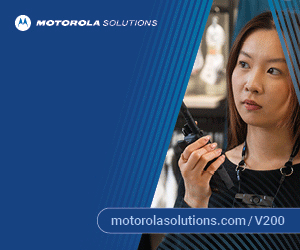INDUSTRY FOCUS
From here to returnity
The post-COVID world where Loss Prevention meets loss of confidence.
Returnity is the portmanteau for women returning to work after having a child, but the blended word is taking on a new resonance in the post-COVID world of both male and female staff confidently getting back to the office after months of lockdown Zoom calls or Furlough.
Claire Causton, who sits on the Board of the Federation of Image Professionals International, argues that there has been a shift in confidence amongst the UK workforce and while some have embraced working from home behind the safety of a screen wearing as little work-appropriate attire as possible, others have missed the office and social support - either way both groups have slipped into a new norm of slippers and joggers to one degree or another.
Claire, whose business, Mirror Image, is based in Hertfordshire, offers professionals of both sexes help in looking and feeling the part in returning to work, said: “Never before have we had to spend so much time looking at ourselves. Zoom and Teams have kept colleagues connected during lockdown but the side effect of seeing yourself at work has led to an over analysis of our appearance and capabilities, possibly even imposter syndrome.
“By this I mean those who were previously self-assured and confident have started to question their abilities in addition to dealing with working from home distractions and demands including children, barking dogs and housework.
“They are no longer putting on their work ‘uniform’ because they are at home and much of the time are not seen by work colleagues, clients and bosses. My argument is that the clothes you wear do two things - they can change your state of mind or express your mood.
“By not dressing for work every day they are missing out on gaining that sense of preparedness and focus for the day ahead which inevitably leads to improved productivity and clearer decision making - staying in joggers or pjs will have a negative effect on confidence and ability.
And, getting this right is more important than ever as the Government furlough scheme is scaled back, exposing business vulnerability and the potential for thousands of job losses, particularly among those companies that are re-structuring their teams, or among head office personnel in offices that will never be at full capacity again, post-COVID.
In the visceral and millennial world of 24/7 social media, everyone is an instant influencer, scrolling and trolling all in their wake, lionising style icons and demonising those who don’t dress to impress. The lay man is laid bare by amateur critics while real experts such as Claire use a professional psychology to raise the bar as well as the confidence of their clients.
“There’s a difference between image consultants and Instagram influencers that we’re all exposed to so often.
“We work with individuals to represent their unique selves in an appropriate way according to their work and social environments. For example, historically women in male dominated industries such as security and loss prevention have felt the need to dress in a masculine way to progress their careers or ‘fit in’.
“I see a lot of clients who physically hide themselves in these industries because of a larger bust, for example. They become self-conscious and believe that male colleagues are judging them – but that should not be their problem. By shrinking like this they are doing the opposite of being themselves and this will affect their work relationships, how they interact with their peers and their performance.”
“Image consultants specialise in this kind of issue and help people be true to themselves and realise their potential because they feel more confident – it is empowering for them.
“This is not about makeovers, but a change of mindset and the confidence to comfortably express your unique self. Consideration for colour, make up and style are the tools we use to make this happen.
“Colour plays an important role in persuasion and influence. If you are at an interview with a big company, for example, try and emulate that brand by reflecting their corporate colour in what you are wearing.”
Another variation of this ‘dress to impress’ approach is mirroring the culture of the organisation in what you wear.
“If it’s a corporate business don’t be afraid to be immaculate in how you present yourself - polished shoes, crisp shirt and tie, nice pen and folder, all of which shows that you are organised. If you are a creative, you could reflect the same way by dressing creatively – a different print on the shirt, an open-neck shirt with an interesting collar, a coloured pocket handkerchief, for example.”
Claire argues that dressing for both work and yourself will be the new norm going forward as the expectation of traditional work attire becomes less popular while the need to be confidently in work mode becomes more important.






